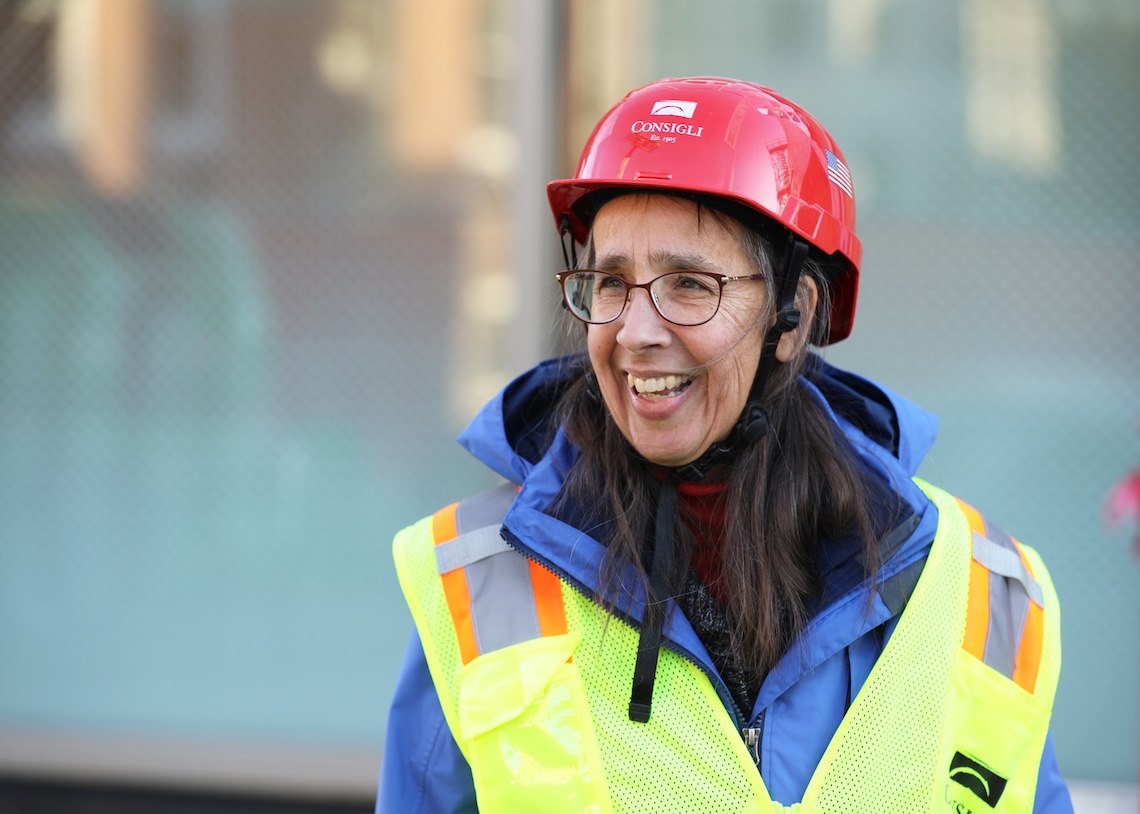
The newest building at the University of Southern Maine is shaping up to be a notable place for songbirds of both the human and feathered varieties.
The Crewe Center for the Arts is under construction on the campus in Portland. Among its many amenities will be state-of-the-art practice and performance space for students in the Osher School of Music. But it was the windows that most interested the visitors who toured the construction site on November 25.
Dr. Christine Maher organized the tour for her colleagues in BirdSafe Maine. The group is a collaboration between USM, the Maine Audubon, and the Portland Society for Architecture. Its mission is to reduce the number of birds that die by flying into the sides of buildings. Maher brings her expertise to the group as a Biology professor at USM.
“To see it and know that every single piece of glass in that building has some kind of bird-friendly design with it is great,” Maher said. “It shows how far we’ve come in a pretty short period of time with people incorporating it into new structures like this.”
The windows at the Crewe Center feature a pattern of acid-etched dots. The markings make the glass visible to birds, so they know to avoid it. But the dots are also transparent enough to allow plenty of sunshine into the building.

Natural light is an important design element, particularly in the Great Hall Gallery, where a bank of windows rises several stories high to provide ideal viewing for all the art that will eventually be on display. If left untreated, those windows would pose a serious risk to passing birds.
The U.S. Fish and Wildlife Service estimates as many as 988 million birds die each year from hitting the windows of buildings. Big-city skyscrapers with their shiny facades aren’t the worst offenders. Birds are more liable to hit first or second story windows as they dart between surrounding trees and shrubs. The Crewe Center fits the latter description.
“When you are aware of glass collisions like I am, you look at a building like this, you think, ‘That could be potentially dangerous,’” Nick Lund said. “So, to have the glass treated in advance is really fantastic.”
Lund is the advocacy and outreach manager for Maine Audubon and a member of BirdSafe Maine. He had lots of questions for he engineers from the construction company that he met on the tour. Lund wanted to know how the windows were made and how frequently they’re used in other projects.
Maine is making progress on some of the issues that Lund has highlighted. Last year, a state law began the process of setting guidelines for bird-friendly construction standards on public buildings. Local leaders in Portland expressed a similar sentiment with a new ordinance they adopted this year.

Though largely exempt from the recent regulations, private residences are just as hazardous to birds as public buildings. Simple adhesives can make household windows safer for birds without the expense of replacing the glass.
Cara Bionde sees the Crewe Center as a trendsetter in both the public and private spheres. She attended the tour in her role as a member of the architectural staff at Kaplan Thompson Architects.
“Having this type of implementation on such a public-facing building will encourage others to do the same,” Bionde said. “It can become a catalyst for more engagement in this space.”
Maher didn’t find out that the Crewe Center would be outfitted with treated windows until much of the framework was already standing. Construction will continue for several more months until the building is ready to open next fall. Maher hopes the students who come to learn music and art will also learn the environmental message embedded in the windows.
“The fact that USM is leading in this area is amazing,” Maher said. “Something to be proud of.”

